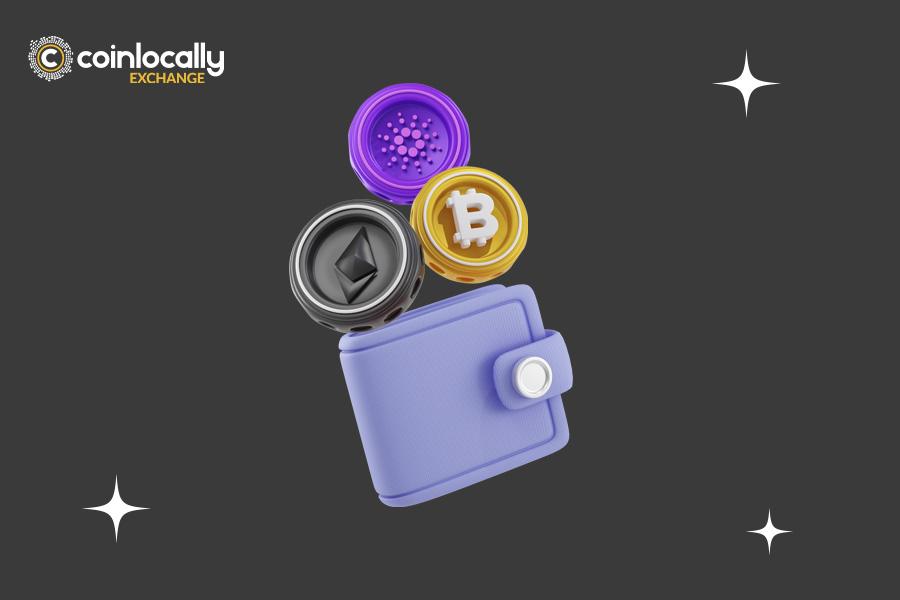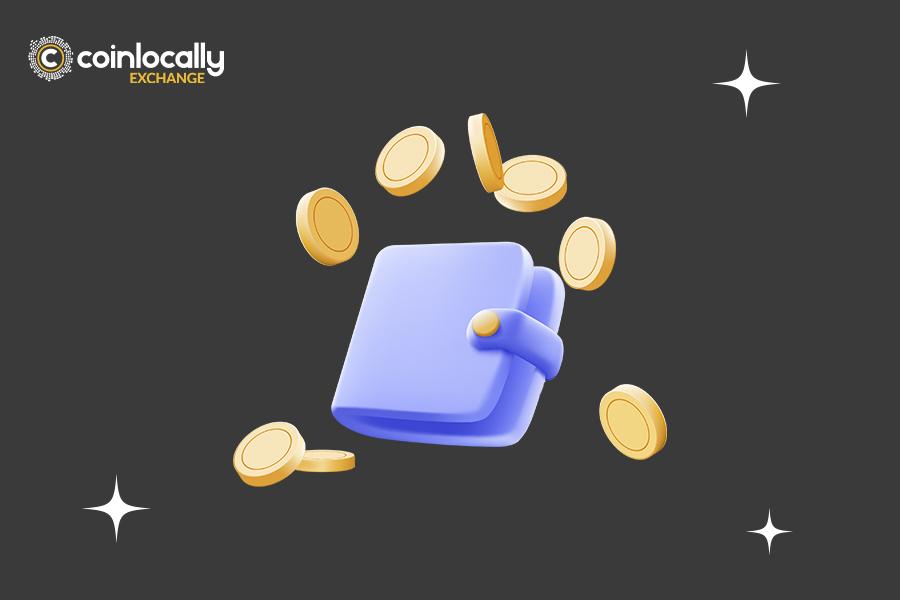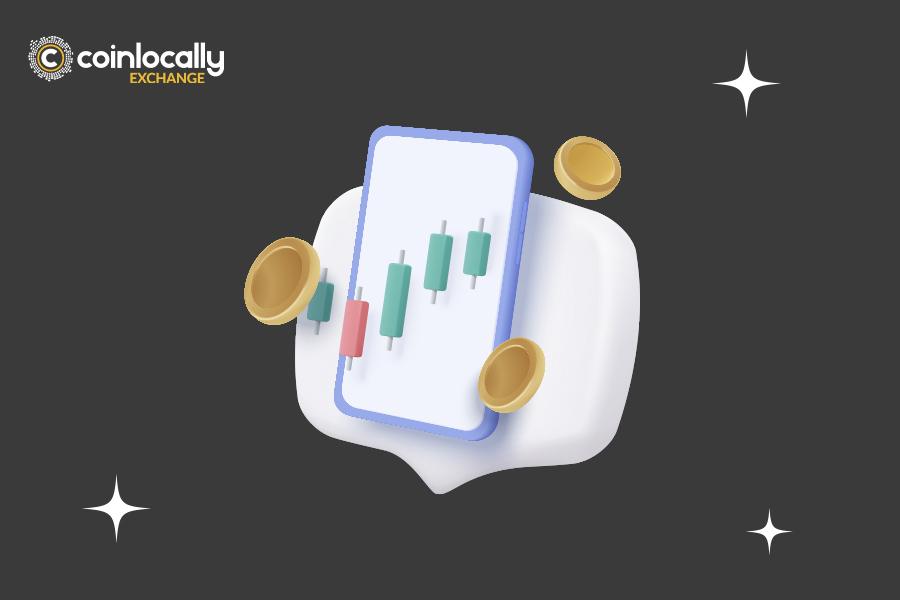A crypto trader can participate in the global digital economy by purchasing, selling, and exchanging digital assets like Bitcoin, Ethereum, Litecoin, Ripple, and more through cryptocurrency trading. Trading cryptocurrencies is swiftly rising in popularity as one of the best methods to invest and generate money. Also, as a crypto trader, you can access markets around the clock and base your decisions on your analysis and risk tolerance. Nevertheless, cryptocurrency trading involves more than just buying cheap and selling high; there are other things to take into account before executing a purchase.
An in-depth knowledge of the market, technical analysis tools, and risk management techniques are necessary for becoming a successful crypto trader. To comprehend how they work and the many order kinds accessible, you must become familiar with trading platforms like Swyftx. Additionally, it is crucial to read up on business news and investigate new market trends. We’ll provide some advice in this article on how to trade cryptocurrencies profitably.
Quick Getaway: Looking for a platform that offers the best Cryptocurrency trading strategies? Sign up at Coinlocally to enjoy demo trading, which provides the best strategies for you as a crypto trader.
Table of Contents
• Which Cryptocurrency trading strategies are best for a crypto trader?
• Tips for Profitable Crypto Trading
- Focus on cybersecurity Seriously
- Cryptocurrency Is Not Covered by Insurance
- Use a Crypto Wallet
- Transaction Fees
- Conversion Fees for Coins
- Gains from Cryptocurrency are Taxable as Income
- Avoid misplacing your coins.
- Remember to Make Investments in the Conventional Stock Market
• Risk Management in Crypto Trading
• Technical analysis for crypto traders
• Fundamental analysis in cryptocurrency trading
Which Cryptocurrency trading strategies are best for a crypto trader?
How do you get started now that you are aware of the fundamentals of Cryptocurrency trading strategies? You might, however, follow our simple instructions to make your first cryptocurrency trade:
• Create a new account with us or sign in to an existing one. From there, you can use our platform to enter the cryptocurrency market.
• Understand how the cryptocurrency market functions and select a coin to concentrate on. With so many choices, keep in mind the value of diversifying your cryptocurrency holdings.
• Create a trading strategy using the following tactics. Pick one that fits your personality and level of risk-taking.
• Choose a platform for trading cryptocurrencies. Coinlocally provides a cutting-edge platform with round-the-clock assistance.
• Open, watch, and close the first position you take. Open a practice account to test your Bitcoin trading methods with fictitious money instead.
Tips for Profitable Crypto Trading
Don’t worry if you are a crypto trader and are feeling overburdened by all the information you need to keep track of when creating a Bitcoin portfolio. Before you start buying and selling cryptocurrencies, check out our comprehensive guide, which covers all you need to know.
However, there are 8 crucial factors to keep in mind when you feel ready to start investing:
1. Focus on cybersecurity Seriously
Treat your coins in your online bank account the same way you would real money when it comes to securing them. Unintentionally being negligent or sloppy with online security is a common trait.
Now is the moment to break unhealthy habits like using passwords that are simple to guess or using the same password across all websites. Make sure your passwords are complicated and lengthy. For each website you visit, use a separate password, and change it at least once a year. Using a password manager to help you keep track of everything is one of the best things you can do.
2. Cryptocurrency Is Not Covered by Insurance
Platforms for trading cryptocurrencies are not insured. In the event that a Canadian bank that is guaranteed by the CDIC fails, your funds are still safe with them. This implies that you will still receive your money even if the bank fails.
In the same way, cryptocurrency is not insured. Your money can be lost forever if the trading platform or crypto bank you’re using fails or is compromised. Keep any cryptocurrency you aren’t actively trading stored away from the Cryptocurrency Trading Platforms to reduce this risk. Choosing the right crypto trading platform can play a leading role in avoiding the risk of losing funds as a crypto trader.
Coinlocally offers a range of platforms including Futures trading platform to make trading easier and more convenient. These include a simple and intuitive user interface, a wide range of payment options, and a robust dispute resolution system to ensure that any issues are resolved quickly and fairly.
3. Use a Crypto Wallet
One of the finest things you can do to safeguard your cryptocurrency is to keep it in a hardware or digital wallet. Your cryptocurrency shouldn’t be left on a trading site where it could be compromised by hackers. A crypto trader should make use of a wallet instead.
You have the option of buying a real hardware wallet like a Ledger device or installing a digital wallet on your computer’s hard drive. The wallet you carry around in your pocket or purse to carry cash is very similar to a hardware wallet. Your cryptocurrency is also lost if you lose your conventional wallet, just like that! Keep your crypto wallet in a secure location as a result, such as a modest home safe or a safety deposit box at your bank.
4. Transaction Fees
While Coinlocally doesn’t impose any commissions or trading fees on your trades, all cryptocurrency transactions involve transaction fees. You pay a tiny transaction charge whenever you transfer cryptocurrency coins from your wallet to a trading platform or the other way around.
A small fraction of a coin is typically charged as the transfer fee when transferring cryptocurrency across platforms. However, it is not a set charge and varies according to the quantity of your transaction and the time you make the transfer.
Because every transaction is recorded in the blockchain, moving Bitcoin has a fee. Due to market conditions and the volume of Bitcoin, you are moving, the fee amount varies.
When a crypto trader trades ETFs, the brokerage account charges ECN (electronic communication network) fees, which is how you can compare Bitcoin transaction fees to those fees. These are negligible fees that come with digital trading and cannot be avoided.
However, there is no justification for shelling out more money than is necessary. A crypto trader should be discouraged from needlessly moving your cryptocurrency across platforms or accounts due to transaction fees. Keep it in your wallet so that its value can increase.
5. Conversion Fees for Coins
Although Bitcoin continues to rule the cryptocurrency world, a crypto trader probably has other coins in their portfolio as well. In addition to Bitcoin, there are other cryptocurrencies that you can benefit from. A crypto trader must pay a currency conversion fee when changing one cryptocurrency for another, just like when doing so with conventional fiat money.
Coin conversion fees are similar to transaction fees in that they are based on the quantity of cryptocurrency a crypto trader is trading, the time they are exchanging it, and the coin they are converting it to. Vary trading platforms may provide varying exchange rates for coins, but keep in mind that you’ll have to pay transaction fees to move your cryptocurrency between them.
6. Gains from Cryptocurrency are Taxable as Income
While as a crypto trader, you try to use cryptocurrencies to get around all the drawbacks of conventional money, you are still unable to avoid paying income taxes. A crypto trader has to pay income taxes on their capital gains if they buy a cryptocurrency, it appreciates in value, and then they sell it.
A crypto trader is responsible for keeping track of their cryptocurrency trades so that they are aware of the precise amount of money they have made (or lost) through your investments.
Trading platforms usually do not issue the tax summary of your account at the end of the year in the same way that traditional brokerages do since cryptocurrency is still mostly unregulated. To the CRA, you must however still provide this data.
To make it simple to figure out any income taxes you owe at the end of the year, keep note of the sums you put into your cryptocurrency accounts as well as the trades you make.
7. Avoid misplacing your coins.
Unbelievably, one of the most typical ways people lose money in the cryptocurrency realm is by misplacing coins.
Up to one in five Bitcoins have gone missing. People have misplaced them in a number of ways, including forgetting pins, mistakenly erasing hard drives with wallets, and actually losing the hardware wallet that had their Bitcoin.
In 2012, I deleted a computer hard disc containing three or more whole Bitcoins because I believed “this cryptocurrency nonsense will never amount to anything.” But even Elon Musk has lost Bitcoin, so I’m not alone. The simplest strategy to prevent losing coins is to use a trading-only cryptocurrency platform so that you never have to deal with them.
A crypto trader should reduce the number of sites and wallets they use to manage their cryptocurrency. After all, having too many bank accounts causes the same headache as this. To handle your cryptocurrency portfolio, one or two trading platforms and one wallet are more than sufficient. Make sure you are aware of where and how to obtain your coins.
8. Remember to Make Investments in the Conventional Stock Market
Even if you’re a fan of cryptocurrencies, a crypto trader still needs to pay attention to the conventional stock market. Despite the fact that cryptocurrency is becoming more legitimate every year, it is still centuries behind the established global stock market, which has steadily increased investor wealth.
Start by investing 1% to 3% of your overall money in a tiny mixture of 2-3 different cryptocurrencies if you’re just getting started with cryptocurrency investing. You might eventually expand your holdings of cryptocurrencies to 5% or even 10% of your overall investment portfolio.
While it may be tempting to spend more money on cryptocurrencies, it’s crucial for a crypto trader to keep in mind that decreasing risk while investing requires diversifying your portfolio and rebalancing as needed.
Risk Management in Crypto Trading
Trading in the crypto Futures market can be a lucrative opportunity for traders looking to invest in the digital asset market. However, as with any form of trading, it is important to manage risk effectively to avoid making costly mistakes. Six important factors to consider when trading in the crypto Futures market are as follows:
1. Understanding Money Management
Money management is a crucial aspect of trading across all markets, including the crypto Futures market. It involves implementing techniques and strategies to limit downside risk in a trade while simultaneously increasing the reward. Experienced traders often work and tweak their trading position size by increasing or decreasing it based on different rules and comfort levels.
A crypto trader may take greater risks to get bigger rewards in a lesser number of trades. Such traders wait for the best and perfect situation to act and pounce on the opportunity. They take fewer trades but act on very high-quality and high-conviction trades that give higher returns too.
On the other hand, some traders depend on the volume of trades and implement a simple strategy that isn’t too difficult to interpret and execute. They undertake a large number of trades in the market with the intention of having higher positives and lower negatives, thus being profitable in the longer run.
There is no right or wrong approach to money management, but it is important to understand what kind of trader you are and how you can act upon it.
2. Utilizing Take-Profit and Stop-Loss Orders
Booking profits and cutting losses short are two of the most important skills a professional trader needs to have. If these two are solved, one can rest assured that they will be able to make a lot of money out of speculative trading in the market.
Strategies may come and go, they can change, and they can improve, but taking profits at the right time and also making sure you don’t lose more than what is necessary and bearable by you are the two most important factors to manage risk in crypto Futures trading.
Coinlocally provides features such as limit orders, market orders, stop-loss limit orders, and stop-loss market orders to equip traders with the best possible tools to execute in the market with the right kind of mindset.
3. Keeping Emotions in Check While Trading Crypto Futures
This is another crucial factor that can make even good traders take bad trades in the crypto Futures market. The potential of a game-changing trade with the benefit of up to 15x leverage provided for crypto trading pairs on CoinDCX Futures – a trader can let emotions take over and end up taking a bad trade that can potentially result in that person wiping out his or her trading capital.
And in a market such as the crypto, volatility is much higher than in other traditional financial markets, and thus, markets can turn at less than a moment’s notice, and it is easy to let emotions cloud your better judgment. But that can lead to poor decisions while in the market, and this next point is going to help you solve this problem.
4. Developing a Crypto Trading Plan
Building a crypto Futures trading plan is quite possibly the single most effective way of solving most of the issues that traders face while trading in the crypto Futures market.
A trading plan is a blueprint of everything you are going to do in a market situation, how you’re going to react, how much time and capital you want to invest, and the strategy you will execute in the live market.
A trading plan also takes care of your tendencies to let emotions get in the way of trading, over-leveraging, or overexposing yourself to a trade you can’t manage and deal with.
Thus, this is probably the single most important learning you should take away from this blog – that is to build a foolproof trading plan that isn’t rigid but is stern. While a trading plan is definitely open to improvements as you grow as a crypto Futures trader, at the same time, there should be some factor of discipline in it that you will follow your plan during a trade, no matter what.
5. Avoid Overtrading
Overtrading is another feature of traders across various markets, including the crypto Futures market too. Overtrading can be a result of a string of bad trades that a trader might have suffered over a certain period and now wishes to get back the capital he or she has lost.
While that objective isn’t wrong, the method definitely is. Overtrading in a way can lead to increased chances of taking more wrong trades in the market, thus resulting in more losses for the trader.
This is why a cool-off period becomes absolutely necessary for a trader to get off their trading terminals and take a break. This is another way one can attempt to manage their risk in crypto Futures trading, where the stakes are much higher than the typical kind of trading or investing for the long term. Over the long term, volatility is smoothened out to give attractive returns, but shorter timeframe trading can be risky.
6. Understand the Risk-to-Reward Ratio
The risk-to-reward ratio is something that every trader should keep in mind while taking every trade in the crypto Futures market. This ratio helps a person to determine whether a certain amount of risk is worth the potential profit one stands to make from the trade in the market. For example, if the initial position was ₹200, and the potential profit was ₹400, the risk-to-reward ratio is 1:2.
The risk-to-reward ratio is something that varies from trader to trader depending on the level of expertise one has or the amount of loss tolerance one has or a combination of both these things. Regardless of the risk appetite or expertise, there should be a fixed risk management strategy in place for any crypto Futures trader, or else Futures markets can be a very dangerous affair.
Technical analysis for crypto traders
Technical analysis is a popular method used by crypto traders to analyze cryptocurrency market trends and predict future price movements of digital assets. Technical analysis involves studying charts and price patterns to identify trading opportunities and make informed decisions.
Here are some key elements of technical analysis for crypto traders:
1. Chart Patterns
Chart patterns are graphical representations of price movements over time. Crypto traders use chart patterns to identify trends, support and resistance levels, and potential trade opportunities.
2. Indicators
Indicators are mathematical calculations based on historical price and volume data. Crypto traders use trading indicators to identify potential price movements and trading opportunities. Some popular trading indicators for crypto traders in technical analysis include Moving Averages, Relative Strength Index (RSI), and Bollinger Bands.
3. Candlestick Charts
Candlestick charts display price movements over a specific time period and are popular among crypto traders. A candlestick chart shows the opening and closing prices, as well as the high and low prices for the period. Traders use candlestick charts to identify trends and make trading decisions.
4. Support and Resistance Levels
Support and resistance levels are price levels where buying and selling pressure is expected to occur. Traders use these levels to identify potential entry and exit points for trades.
5. Trend Lines
Trend lines are lines drawn on a chart that connect two or more price points. Traders use trend lines to identify potential trend reversals and to determine the direction of the trend.
6. Timeframes
Timeframes are the intervals in which price movements are displayed on a chart. Crypto traders use different timeframes to analyze different aspects of the market. Shorter timeframes are used for identifying short-term trading opportunities, while longer timeframes are used for identifying long-term trends.
Fundamental analysis in cryptocurrency trading
Fundamental analysis is a method of evaluating an asset’s intrinsic value by examining its underlying economic and financial factors. In cryptocurrency trading, fundamental analysis involves analyzing various factors that can affect the value of a particular cryptocurrency, such as its adoption rate, network security, technology, and regulatory environment.
One of the primary factors that traders consider when performing fundamental analysis in cryptocurrency trading is the adoption rate. This refers to the number of people and businesses that are using cryptocurrency for transactions, as well as the number of merchants that accept it as payment. The higher the adoption rate, the more valuable the cryptocurrency is likely to be.
Crypto Trading Psychology and Mindset
Crypto trading psychology and mindset play a crucial role in a trader’s success in the cryptocurrency market. Trading can be a highly emotional experience, and traders who are not prepared to handle their emotions can make impulsive, irrational decisions that can lead to losses.
Trading psychology and mindset are essential components of successful trading in the cryptocurrency market. Traders who can control their emotions, maintain discipline, exercise patience, implement risk management strategies, and maintain a positive mindset are more likely to succeed in the long run.
Conclusion
Trading cryptocurrencies is a thrilling way to participate in the global digital economy. You can become a profitable cryptocurrency trader if you have the necessary skills, resources, and methods. We hope that this post has given you some helpful advice to get your adventure started.





